Subject: Still Water research recognized by National Geographic, NY Times, Thoma
Here's a roundup of recent news from Still Water, the New Media Department's network research arm. Notwithstanding the sabbaticals of its co-directors this past year, the team's research has recently won awards, inspired students, and appeared in National Geographic and The New York Times.
MIT publishes first academic book on digital preservation
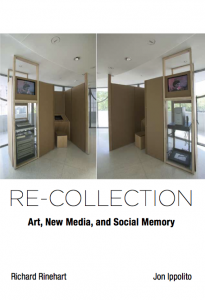 The first book on the philosophy and aesthetics of digital preservation examines the challenge posed by new media to our long-term social memory. Co-authored by Richard Rinehart and Still Water Co-director Jon Ippolito, Re-collection: Art, New Media and Social Memory has been called "a bold and inspiring manifesto on how best to care for the art and culture of the digital age" (Alexander Galloway, NYU). Cited in an ArtNews cover article, the book was the official subject of a three-week discussion on the Yasmin email list, garnering almost a hundred posts. To date its authors have toured the book in the US, Canada, Mexico, Belgium, Germany, Norway, Hungary, and China.
The first book on the philosophy and aesthetics of digital preservation examines the challenge posed by new media to our long-term social memory. Co-authored by Richard Rinehart and Still Water Co-director Jon Ippolito, Re-collection: Art, New Media and Social Memory has been called "a bold and inspiring manifesto on how best to care for the art and culture of the digital age" (Alexander Galloway, NYU). Cited in an ArtNews cover article, the book was the official subject of a three-week discussion on the Yasmin email list, garnering almost a hundred posts. To date its authors have toured the book in the US, Canada, Mexico, Belgium, Germany, Norway, Hungary, and China.
Collaborations in sustainability featured in National Geographic
 In an article on the growing cohousing movement, National Geographic magazine interviewed Still Water Co-Director Joline Blais about her research on these "living laboratories for sustainability." Blais spoke to the sharing economy at the heart of Belfast Cohousing & Ecovillage, an intentional community on the coast of Maine that Blais has helped found along with others seeking a greater connection with the environment and each other.
In an article on the growing cohousing movement, National Geographic magazine interviewed Still Water Co-Director Joline Blais about her research on these "living laboratories for sustainability." Blais spoke to the sharing economy at the heart of Belfast Cohousing & Ecovillage, an intentional community on the coast of Maine that Blais has helped found along with others seeking a greater connection with the environment and each other.
Green design a focus of local Still Water presentations
![]() Following on the heels of her Healing Seeds exhibitions the year before, Blais collaborated with New Media students from her NMD 206 class and Dan Dixon of the UMaine Office of Sustainability to curate the exhibition Lexicon of Sustainability, a visual lesson in green design. Blais and Still Water Research Fellow gkisedtanamoogk spoke at Building Sustainable Communities: International, National and Local Perspectives, held at UMaine the previous October. Both veterans of the LongGreenHouse project, Blais and gkisedtanamoogk brought long-term yet pragmatic visions to this gathering of lawmakers, architects, engineers, and activists.
Following on the heels of her Healing Seeds exhibitions the year before, Blais collaborated with New Media students from her NMD 206 class and Dan Dixon of the UMaine Office of Sustainability to curate the exhibition Lexicon of Sustainability, a visual lesson in green design. Blais and Still Water Research Fellow gkisedtanamoogk spoke at Building Sustainable Communities: International, National and Local Perspectives, held at UMaine the previous October. Both veterans of the LongGreenHouse project, Blais and gkisedtanamoogk brought long-term yet pragmatic visions to this gathering of lawmakers, architects, engineers, and activists.
Still Water staff awarded publication and education grants
 Ippolito won the inaugural $30,000 Digital Art Writing prize offered by the Thoma Foundation, and spoke at a presentation at New York's School of Visual Arts last December in his honor. Meanwhile a collaboration between Dartmouth and UMaine's VEMI lab co-organized by Still Water Senior Researcher John Bell won an NEH grant to help scholars access and annotate historical film and television from archives across the globe. Bell and Ippolito were also awarded an eLearning grant to develop a Tutorial Pool to go with the department's growing suite of online tutorials that form the core of its "Just-in-Time Learning" initiative, and a followup $10,000 Thoma grant for a Still Water project aimed at linking thematically similar academic essays across the Web.
Ippolito won the inaugural $30,000 Digital Art Writing prize offered by the Thoma Foundation, and spoke at a presentation at New York's School of Visual Arts last December in his honor. Meanwhile a collaboration between Dartmouth and UMaine's VEMI lab co-organized by Still Water Senior Researcher John Bell won an NEH grant to help scholars access and annotate historical film and television from archives across the globe. Bell and Ippolito were also awarded an eLearning grant to develop a Tutorial Pool to go with the department's growing suite of online tutorials that form the core of its "Just-in-Time Learning" initiative, and a followup $10,000 Thoma grant for a Still Water project aimed at linking thematically similar academic essays across the Web.
Joline Blais' classes featured in television and newspaper articles
 Recent TV and news articles featured outdoor-oriented ventures from the 2015 capstone course taught by Still Water Co-Director Joline Blais, from drone classes for high school students to mobile apps to help forestry workers. The Bangor Daily News also showcased a series of "digital postcards," focused on growing up in Maine, that Blais organized with students from her New Media digital narrative class.
Recent TV and news articles featured outdoor-oriented ventures from the 2015 capstone course taught by Still Water Co-Director Joline Blais, from drone classes for high school students to mobile apps to help forestry workers. The Bangor Daily News also showcased a series of "digital postcards," focused on growing up in Maine, that Blais organized with students from her New Media digital narrative class.
Digital Curation graduate program wins acclaim
 A report from the Washington-based Education Advisory Board features the University of Maine as one of the only institutions in the world offering a digital curation program and highlights our "free online tutorials that foster individualized learning" to help accommodate "students' varying levels of technological knowledge." Maine Archives & Museums also profiled this innovative program, calling it "the front of an incoming wave."
A report from the Washington-based Education Advisory Board features the University of Maine as one of the only institutions in the world offering a digital curation program and highlights our "free online tutorials that foster individualized learning" to help accommodate "students' varying levels of technological knowledge." Maine Archives & Museums also profiled this innovative program, calling it "the front of an incoming wave."
Senior Researchers take digital humanities positions at Dartmouth and Claremont
 Named a HASTAC Scholar in 2013, John Bell has since joined Dartmouth College, where he spearheads the development of an innovative institutionsutional repository and galvanizes digital collaborations with humanities faculty across campus--not to mention continuing to teach in our all-online Digital Curation program. In fall 2015 Still Water Senior Researcher Craig Dietrich was named Director of the Digital Humanities Studio at the Claremont Colleges of California, where he founded Still Water West. Dietrich also was a guest speaker in the Digital Curation graduate program last year, along with such leaders of the field as Jason Scott of the Internet Archive and Dragan Espenschied of Rhizome. Lucky for us, Bell and Dietrich both remain Still Water Senior Researchers.
Named a HASTAC Scholar in 2013, John Bell has since joined Dartmouth College, where he spearheads the development of an innovative institutionsutional repository and galvanizes digital collaborations with humanities faculty across campus--not to mention continuing to teach in our all-online Digital Curation program. In fall 2015 Still Water Senior Researcher Craig Dietrich was named Director of the Digital Humanities Studio at the Claremont Colleges of California, where he founded Still Water West. Dietrich also was a guest speaker in the Digital Curation graduate program last year, along with such leaders of the field as Jason Scott of the Internet Archive and Dragan Espenschied of Rhizome. Lucky for us, Bell and Dietrich both remain Still Water Senior Researchers.
Other news
 Blais and Ippolito have continued to support UMaine's biennial Digital Humanities Week, which in 2015 included scholars mapping the Holocaust and Salem witch trials and in 2013 included Maine's first THATCamp, a democratic conference organized by 60 participants deciding what they want to learn together. They were quoted in The New York Times, Maine Public Radio, and interviews with the Smithsonian, Library of Congress, and University of Chicago and published in several anthologies including the International Handbook of Museum Studies.
Blais and Ippolito have continued to support UMaine's biennial Digital Humanities Week, which in 2015 included scholars mapping the Holocaust and Salem witch trials and in 2013 included Maine's first THATCamp, a democratic conference organized by 60 participants deciding what they want to learn together. They were quoted in The New York Times, Maine Public Radio, and interviews with the Smithsonian, Library of Congress, and University of Chicago and published in several anthologies including the International Handbook of Museum Studies.
Past Still Water newsletters online
Visit Still-Water.net/newsletters to read about other newsworthy Still Water projects. (If you want to stop getting these annual newsletters, please let us know.) Have a great spring!
Subject: Digital Curation program, Belfast ecovillage launched this year
This past year Still Water staff helped launch an ecovillage and a new graduate program, and were featured in a dozen news stories. Some highlights follow.
Belfast Cohousing & Ecovillage is a reality

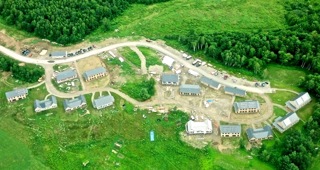 Now that its members are moving in, the Belfast Cohousing & Ecovillage was featured on WERU's live call-in show Talk of the Towns on the 25th of January. Still Water Co-Director Joline Blais is a partner in building this innovative community, whose net-zero energy homes and consensus governance aim to be a model for sustainable living.
Now that its members are moving in, the Belfast Cohousing & Ecovillage was featured on WERU's live call-in show Talk of the Towns on the 25th of January. Still Water Co-Director Joline Blais is a partner in building this innovative community, whose net-zero energy homes and consensus governance aim to be a model for sustainable living.
Blais also coordinated a series of permaculture workshops to design an edible landscape for the ecovillage. In a collaboration with the architecture firm GO Logic, she installed energy monitoring sensors throughout her home to mine data on the dynamics of its Passivhaus solar technology. This research partnership will uncover ways that ordinary families can decrease their carbon footprint through changes in architecture, energy consumption, and daily habits.
Blais' research into sustainability and indigenous culture was the focus of an article on her "wonderfully insightful analysis" in Permaculture News.
Healing Seeds investigates human-plant relationships
 Healing Seeds debuted at the Belfast Art Market on 12 July and was re-performed at the Belfast Cohousing & Ecovillage summer celebration on 14 July. Blais's performative artwork encourages participants to grow personalized medicine using an indigenous Russian practice. The project will be featured in Portals: Six Environmental Art Installations at Waterfall Arts in Belfast, which opens Friday 6 September 5-8pm and runs till 27 November. The exhibition is co-sponsored by Maine Environmental Art & Design, Unity College, CMCA, and the Maine Farmland Trust.
Healing Seeds debuted at the Belfast Art Market on 12 July and was re-performed at the Belfast Cohousing & Ecovillage summer celebration on 14 July. Blais's performative artwork encourages participants to grow personalized medicine using an indigenous Russian practice. The project will be featured in Portals: Six Environmental Art Installations at Waterfall Arts in Belfast, which opens Friday 6 September 5-8pm and runs till 27 November. The exhibition is co-sponsored by Maine Environmental Art & Design, Unity College, CMCA, and the Maine Farmland Trust.
Fledgling Digital Curation program already earning national attention
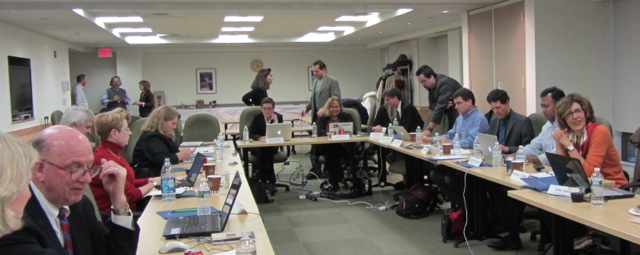 Whether they manage bits for their local historical society or the Library of Congress, the digital era has placed added demands on today's curators. The growing need for training in these new skills is one of the motivations for the University of Maine's just-launched Digital Curation graduate program.
Whether they manage bits for their local historical society or the Library of Congress, the digital era has placed added demands on today's curators. The growing need for training in these new skills is one of the motivations for the University of Maine's just-launched Digital Curation graduate program.
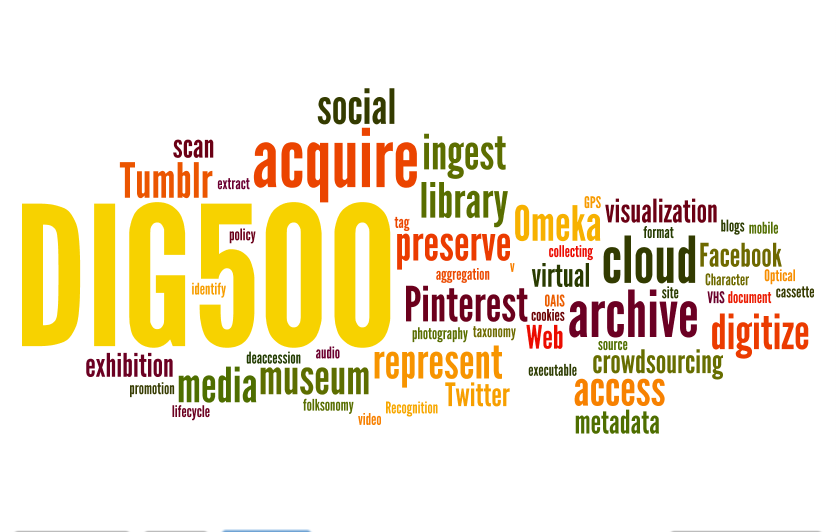 After only a year online, the program is being called "a national standard for the study of digital curation." One student opined:
After only a year online, the program is being called "a national standard for the study of digital curation." One student opined:
"The breadth of [the instructors'] experience and knowledge (to say nothing of the eloquence, informativeness, and wit of their text) have made me feel that this first, inaugural class will be saying 'we were there when'..."
Program lead and Still Water co-director Jon Ippolito gave the keynote for International Audiovisual Festival on Museums and Heritage, Canadian Centre for Architecture, Montreal, 9-12 October, 2012. And UMaine's digital curation professors joined colleagues from around the world on January 8th at a summit in Washington with the aim of defining the knowledge and skills needed by today's information caretakers.
Still Water Senior Researcher John Bell and co-director Ippolito presented at the December advisory board meeting of 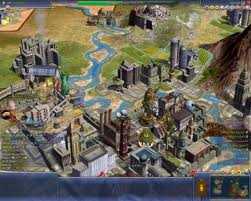 Preserving Virtual Worlds, an IMLS-funded initiative in D.C., to discuss ways to take advantage of Still Water's preservation and access tools such as the Variable Media Questionnaire and the Metaserver.
Preserving Virtual Worlds, an IMLS-funded initiative in D.C., to discuss ways to take advantage of Still Water's preservation and access tools such as the Variable Media Questionnaire and the Metaserver.
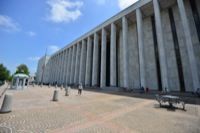
Bell and Ippolito also participated in the Library of Congress's Preserving.exe conference from 20-21 May on the challenges of keeping software alive for the long term.
John Bell is partnering with Dartmouth College to create a "media ecology" system allowing expanded scholarly access to and use of video archives including WGBH, the UCLA Film and Television Archive, the Northeast Historic Film Archive, and the Library of Congress Paper Print Collection.
 The Maine Folklore Sampler, a collaboration between Still Water Co-Director Blais and Digital Curation faculty Pauleena MacDougal, drew the attention of the DC Telegraph. Visitors to the Web site can stream story and song recordings from all over the state as displayed on an interactive map, or consult curriculum guides for K-12 educators.
The Maine Folklore Sampler, a collaboration between Still Water Co-Director Blais and Digital Curation faculty Pauleena MacDougal, drew the attention of the DC Telegraph. Visitors to the Web site can stream story and song recordings from all over the state as displayed on an interactive map, or consult curriculum guides for K-12 educators.
 On 26 July, Wired featured an interview with Ippolito about the preservation of new media, including a mention of his upcoming book Re-Collection: Art, New Media, and Social Memory from MIT Press. The New York Times cited Ippolito's Variable Media Network in its 9 June article on preserving new media.
On 26 July, Wired featured an interview with Ippolito about the preservation of new media, including a mention of his upcoming book Re-Collection: Art, New Media, and Social Memory from MIT Press. The New York Times cited Ippolito's Variable Media Network in its 9 June article on preserving new media.
Software studies book debuts at number 1 in its Amazon category

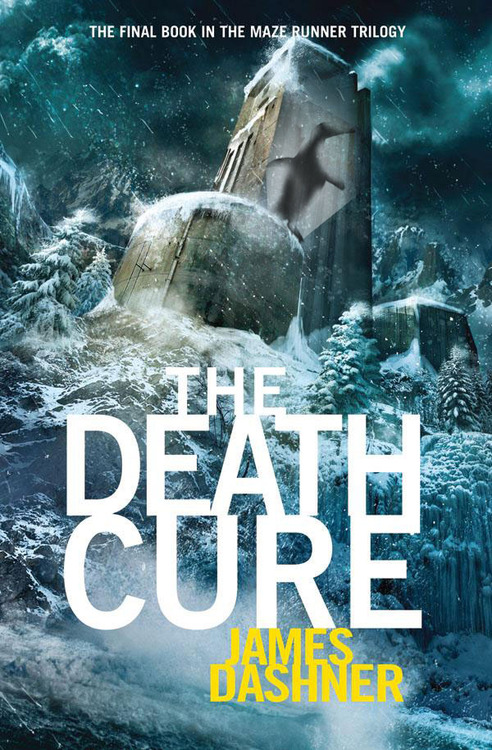 An MIT Press book co-authored by John Bell about a single line of code hit number 1 in Computer Graphics at Amazon on release and went into its third printing in under a week. This groundbreaking collaboration between scholars at MIT, Georgia Tech, and UMaine received positive reviews from Slate and the Chronicle of Higher Education, and was the subject of presentations at MIT and UMaine.
An MIT Press book co-authored by John Bell about a single line of code hit number 1 in Computer Graphics at Amazon on release and went into its third printing in under a week. This groundbreaking collaboration between scholars at MIT, Georgia Tech, and UMaine received positive reviews from Slate and the Chronicle of Higher Education, and was the subject of presentations at MIT and UMaine.
Leonardo published an article by Bell on Augmented Reality and an interview with him by Richard Reinhart and Lanfranco Aceti. Later that spring, Bell spoke to the Bangor Region Chamber of Commerce on the business use of social media.
A contagious media project by John Bell prompted by the recent merger of Random House and Penguin Books went viral; Bell's Web site went from zero to ten thousand visitors in a few days, Random House editors began following him on Twitter, and Penguin Book's president mentioned him on Facebook.
Scalar earns Editor's Choice from PC Magazine
 Scalar is an online platform that gives scholars new ways to publish media-rich research. PC Magazine honored April's public launch with an Editors' Choice along with a 4.5/5 star "excellent rating." The project was built by the Alliance for Networking Visual Culture (ANVC) centered at USC, which includes Still Water Senior Researchers Craig Dietrich and John Bell.
Scalar is an online platform that gives scholars new ways to publish media-rich research. PC Magazine honored April's public launch with an Editors' Choice along with a 4.5/5 star "excellent rating." The project was built by the Alliance for Networking Visual Culture (ANVC) centered at USC, which includes Still Water Senior Researchers Craig Dietrich and John Bell.
LA Green Grounds replaces lawns with lettuce
According to Streetsblog Los Angeles' Sahra Sulaiman, Still Water Fellows Vanessa Vobis, Craig Dietrich, and collaborators are "saving the world, one garden at a time." Their project LA Green Grounds continues to dig up both lawns and publicity on its mission to turn Los Angelenos into gardeners. Yes Magazine ran a headline story on their colleague and "renegade gardener" Ron Finley, who also gave a TED talk this past year.
Still Water helps Colby turn visitors into makers
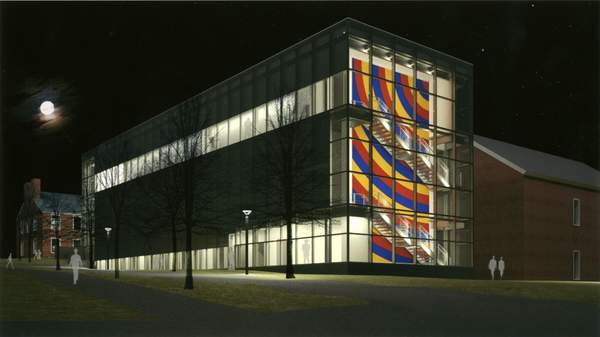 Now that it has reopened on July 13 after a major renovation, the Colby College Museum is the largest art museum in Maine. Colby's staff invited Still Water to brainstorm about how to make their new pavilion a destination for today's media-savvy creators.
Now that it has reopened on July 13 after a major renovation, the Colby College Museum is the largest art museum in Maine. Colby's staff invited Still Water to brainstorm about how to make their new pavilion a destination for today's media-savvy creators.
Still Water professors in the news
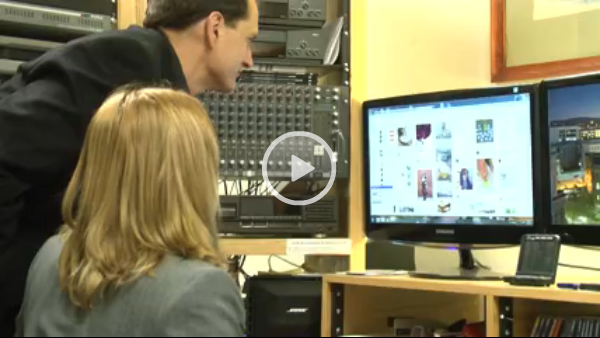 ABC TV-7 interviewed Ippolito to find out why one of five women use Pinterest. He weighed in on Maine Public Radio about the ASMR meme and about subliminal messages behind the colors of political ads.
ABC TV-7 interviewed Ippolito to find out why one of five women use Pinterest. He weighed in on Maine Public Radio about the ASMR meme and about subliminal messages behind the colors of political ads.
Maine Public Radio also highlighted the debate over open access to scholarly publications in conversation with Ippolito and his fellow colleagues from the University of Maine.
 The 2013 New Media Night was the focus of ABC/Fox's "New Media around Every Corner" on 2 May 2013. Anchorman Jared Pliner applauded New Media capstones, declaring, "To see some of the things that they crank out of that university is just amazing. The hope is that they will take this out beyond graduation and turn it into something, perhaps even a business. Incredible stuff."
The 2013 New Media Night was the focus of ABC/Fox's "New Media around Every Corner" on 2 May 2013. Anchorman Jared Pliner applauded New Media capstones, declaring, "To see some of the things that they crank out of that university is just amazing. The hope is that they will take this out beyond graduation and turn it into something, perhaps even a business. Incredible stuff."
In addition, Ippolito published an analysis of Facebook in the book Open Field: Conversations on the Commons and an interview on the future of museums in WEAVE magazine.
Past Still Water newsletters online
Visit Still-Water.net/newsletters to read about other newsworthy Still Water projects. (If you want to stop getting these biannual newsletters, please let us know.) Have a great August!
Subject: Still Water profs in this week's MPBN, ABC-TV, Congressional Quarterly
The past few months have seen a barrage of news stories that feature Still Water co-directors in TV, radio, print, and online outlets. Here are some of the highlights:
Maine Public Radio interviews Joline Blais on Belfast ecovillage
 On Wednesday's edition of Maine Things Considered, Still Water's Joline Blais spoke about her fieldwork at the Belfast Cohousing & Ecovillage. Winner of the US Green Building Council's 2011 Project of the Year, this sustainable village on the Maine coast broke ground last fall, has built nine of its 36 dwellings, and aims to be a model of community governance and ecological responsibility. In the NPR story, entitled "Idealism Meets Reality," Blais explains how to harness the power of neighbors to solve social problems. (Audio and illustrated transcript archived here.)
On Wednesday's edition of Maine Things Considered, Still Water's Joline Blais spoke about her fieldwork at the Belfast Cohousing & Ecovillage. Winner of the US Green Building Council's 2011 Project of the Year, this sustainable village on the Maine coast broke ground last fall, has built nine of its 36 dwellings, and aims to be a model of community governance and ecological responsibility. In the NPR story, entitled "Idealism Meets Reality," Blais explains how to harness the power of neighbors to solve social problems. (Audio and illustrated transcript archived here.)
The story was recorded on the occasion of last Sunday's summer festival, where Blais conducted workshops and tours of the ecovillage to over a hundred visitors, including members of the Permaculture Design class sponsored by the Maine Organic Farmers and Growers Association.
Obsolescence and tattoos in Wired, ABC-TV

 On 26 July, Wired featured an interview with Jon Ippolito about the preservation of new media, including a mention of his upcoming book Re-Collection: Art, New Media, and Social Memory from MIT Press.
On 26 July, Wired featured an interview with Jon Ippolito about the preservation of new media, including a mention of his upcoming book Re-Collection: Art, New Media, and Social Memory from MIT Press.
In April, Ippolito commented on Nokia's patent for a vibrating tattoo in the ABC 7 story Linked With Ink.
Permaculture presentations archived online
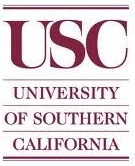 Over the past spring and summer Blais has made several presentations on the principles of permaculture, whose design-with-nature strategies can be applied to sustainable development of all kinds.
Over the past spring and summer Blais has made several presentations on the principles of permaculture, whose design-with-nature strategies can be applied to sustainable development of all kinds.
We have now archived the video of her presentations Redesigning Reality and Designing a Better Burrito.
Internet freedom stories on ABC-TV and Congressional Quarterly
 When protests erupted across the Internet last January in response to proposed legislative restrictions, Ippolito weighed in along with fellow commentator Computer Science professor George Markowsky on the ABC-7 Nightly News.
When protests erupted across the Internet last January in response to proposed legislative restrictions, Ippolito weighed in along with fellow commentator Computer Science professor George Markowsky on the ABC-7 Nightly News.
Ippolito's commentary on the SOPA/PIPA bills was also cited in an issue of the Congressional Quarterly Researcher devoted to Internet Regulation.
Past Still Water newsletters now online
Visit Still-Water.net/newsletters to read about other newsworthy Still Water projects. (If you want to stop getting these biannual newsletters, please let us know.) Enjoy what's left of summer!
Subject: Still Water "redesigns reality" at USC and Belfast
This past spring found Still Water co-directors Joline Blais and Jon Ippolito redesigning life as experienced via Web sites, neighborhoods, and university curricula. Read more about recent work by Still Water staff in the newsletter below.
Redesigning Reality at USC
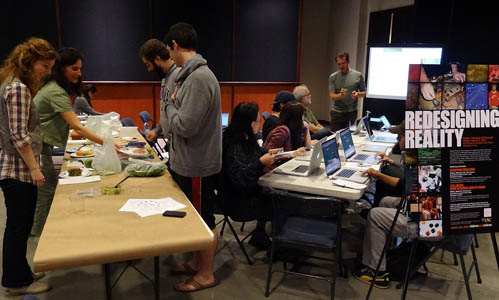 This past March, Blais and Ippolito joined forces for a series of presentations at USC organized by Still Water Senior Researcher and USC professor Craig Dietrich.
This past March, Blais and Ippolito joined forces for a series of presentations at USC organized by Still Water Senior Researcher and USC professor Craig Dietrich.
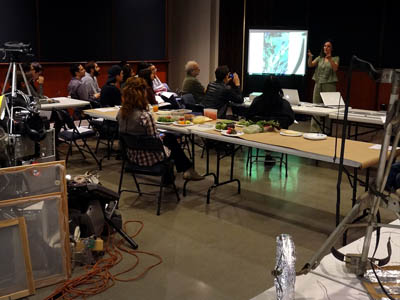 At USC's Institute for Multimedia Literacy, Blais presented How Resilient Systems Think, a discussion probing the intersection of digital culture, indigenous culture and permaculture, offering network alternatives to hierarchy and broadcast culture.
At USC's Institute for Multimedia Literacy, Blais presented How Resilient Systems Think, a discussion probing the intersection of digital culture, indigenous culture and permaculture, offering network alternatives to hierarchy and broadcast culture.
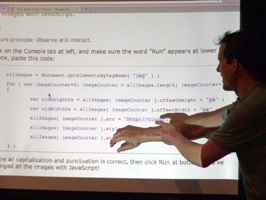 Ippolito led a conversation on digital media production and preservation based on Re-collection: New Media and Social Memory, an MIT Press book coauthored with Richard Rinehart and due out next year.
Ippolito led a conversation on digital media production and preservation based on Re-collection: New Media and Social Memory, an MIT Press book coauthored with Richard Rinehart and due out next year.
The week culminated at the School of Cinematic Arts with Redesigning Reality, a hands-on session in hacking the "scripts" that govern us to make everyday life more sustaining and sustainable. Workshop participants redesign their favorite foods and Web sites, looking to nature as a model for the victual and virtual.
Ecovillage Land Use workshop
 In her work as a member of the Belfast Cohousing & Ecovillage land use committee, Blais organized a workshop with internationally recognized soil expert Mark Fulford on "hundred-yard food" in spring of 2012. Fulford showed how to plant raspberry 'sharing' bushes between neighbors yards, spiral herbs outside our kitchen doors, and otherwise act as a neighborhood farmer--and thus generate life, food and community.
In her work as a member of the Belfast Cohousing & Ecovillage land use committee, Blais organized a workshop with internationally recognized soil expert Mark Fulford on "hundred-yard food" in spring of 2012. Fulford showed how to plant raspberry 'sharing' bushes between neighbors yards, spiral herbs outside our kitchen doors, and otherwise act as a neighborhood farmer--and thus generate life, food and community.
Belfast Cohousing & Ecovillage was named 2011 Project of the Year by the US Green Building Council, which certifies all LEED buildings. Blais is a cofounder and equity member of this self-financed and self-developed model community, which broke ground last fall and is on-schedule to offer homes ready to occupy next month.
Digital Curation graduate program to launch September 2012
 The Digital Curation program is a two-year graduate certificate, taught online, intended for professionals working in museums, archives, artist studios, government offices, and anywhere that people need to manage digital files. The program walks students through the phases of managing digitized or born-digital artifacts, including acquisition, representation, access, and preservation.
The Digital Curation program is a two-year graduate certificate, taught online, intended for professionals working in museums, archives, artist studios, government offices, and anywhere that people need to manage digital files. The program walks students through the phases of managing digitized or born-digital artifacts, including acquisition, representation, access, and preservation.
The first course in the sequence, DIG 500, will be taught by Fogler's Richard Hollinger, Art's Justin Wolff, and Ippolito, who is also Digital Curation project director.
2012 New Media Curriculum boosts tech skills
 The 2012 New Media curriculum features three new core courses and numerous modifications to existing ones in an attempt to strike a better balance between required and elective courses. Students will now be required to maintain and upgrade an online portfolio, while pumping up the technical muscle of New Media Majors is a newly implemented Baseline Programming Language integrated in courses across the first and second years. This effort was spearheaded by Ippolito with steadfast support from New Media colleagues Blais, Bill Kuykendall, Mike Scott, and Owen Smith, under the guidance of 2010-11 director Susan Groce and 2011-12 chair Larry Latour.
The 2012 New Media curriculum features three new core courses and numerous modifications to existing ones in an attempt to strike a better balance between required and elective courses. Students will now be required to maintain and upgrade an online portfolio, while pumping up the technical muscle of New Media Majors is a newly implemented Baseline Programming Language integrated in courses across the first and second years. This effort was spearheaded by Ippolito with steadfast support from New Media colleagues Blais, Bill Kuykendall, Mike Scott, and Owen Smith, under the guidance of 2010-11 director Susan Groce and 2011-12 chair Larry Latour.
Just-in-time learning system prototyped

 Students taking NMD 295 "Script Your World" this term will end up being the teachers next term. That's because the class goal is to build online tutorials on technical skills that could be useful for future students in any class. Co-taught this term by Ippolito and NMD chair Larry Latour, this experiment in bottom-up learning is producing screencasts in everything from Photoshop to Processing. When these tutorials are ready for prime time, the U-Me New Media Department will launch its repository of how-to screencasts and other educational resources online for free.
Students taking NMD 295 "Script Your World" this term will end up being the teachers next term. That's because the class goal is to build online tutorials on technical skills that could be useful for future students in any class. Co-taught this term by Ippolito and NMD chair Larry Latour, this experiment in bottom-up learning is producing screencasts in everything from Photoshop to Processing. When these tutorials are ready for prime time, the U-Me New Media Department will launch its repository of how-to screencasts and other educational resources online for free.
From assignment to app in 5 months
What started as an assignment in Ippolito's Networks & Creativity class in October was approved by Apple for its App Store the following April. After creating a demo version in response to reviews in The Pool, UMaine Intermedia student Jennifer Hooper teamed up with NMD alum Justin Russell at Sephone Interactive in Bangor to release a Community Connector mobile app for local riders.
Online badge system could transform education
 As stage-one winners of the MacArthur/HASTAC Digital Media and Learning competition, Still Water Senior Researcher John Bell and his colleague Rick Corey traveled to San Francisco last March. Sunny Lee of the Mozilla Foundation, makers of the popular Firefox browser and proponents of the open Web, said their "proposed system of badges benefits the earner, the potential employer, and the University by clearly exposing to potential employers the impressive academic learning results produced at the University of Maine, thereby making it easy for organizations to more fully grasp a student's depth of knowledge, skills, and competencies....The open source community is based on experts and learners coming together to produce something new, and [Bell and Corey's Innovative Communication Design] model of collaborative teaching and peer-based learning is an intriguing application of the method to scholarship within the academy."
As stage-one winners of the MacArthur/HASTAC Digital Media and Learning competition, Still Water Senior Researcher John Bell and his colleague Rick Corey traveled to San Francisco last March. Sunny Lee of the Mozilla Foundation, makers of the popular Firefox browser and proponents of the open Web, said their "proposed system of badges benefits the earner, the potential employer, and the University by clearly exposing to potential employers the impressive academic learning results produced at the University of Maine, thereby making it easy for organizations to more fully grasp a student's depth of knowledge, skills, and competencies....The open source community is based on experts and learners coming together to produce something new, and [Bell and Corey's Innovative Communication Design] model of collaborative teaching and peer-based learning is an intriguing application of the method to scholarship within the academy."
Past Still Water newsletters now online
Visit Still-Water.net/newsletters to read about Still Water collaborations that have won the 2011 Green Project of the Year, an NEH grant higher than any ever awarded at the University of Maine, and much more. (If you want to stop getting these biannual newsletters, please let us know.) Have a great summer!
Subject: Still Water collaboration named Green Project of the Year
Here's a roundup of recent news from Still Water, the New Media Department's network research arm, about its projects in social media and sustainability.
Still Water collaboration named Green Project of the Year
 As part of Still Water's commitment to local economies and ecologies, its co-directors Joline Blais and Jon Ippolito helped to found Belfast Cohousing & Ecovillage along with 20 other families dedicated to this self-developed and self-financed neighborhood. Now the home design for this grass-roots community has been named the 2011 Project of the Year by the US Green Building Council, the organization that oversees LEED certifications, and earlier this year won the National Resource Council of Maine's 2011 People's Choice Award.
As part of Still Water's commitment to local economies and ecologies, its co-directors Joline Blais and Jon Ippolito helped to found Belfast Cohousing & Ecovillage along with 20 other families dedicated to this self-developed and self-financed neighborhood. Now the home design for this grass-roots community has been named the 2011 Project of the Year by the US Green Building Council, the organization that oversees LEED certifications, and earlier this year won the National Resource Council of Maine's 2011 People's Choice Award.
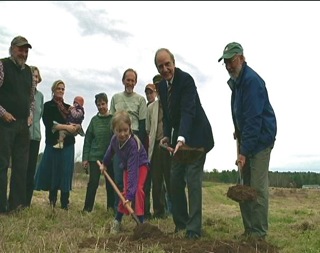 Apart from net zero energy homes, the residents of this community that has been called the future of housing" share in a large common house, food growing in their backyard, and governance by consensus.Senator George Mitchell officially broke the ground in November, an event covered by such news organizations as the Bangor Daily News, MPBN, and WABI TV 5.
Apart from net zero energy homes, the residents of this community that has been called the future of housing" share in a large common house, food growing in their backyard, and governance by consensus.Senator George Mitchell officially broke the ground in November, an event covered by such news organizations as the Bangor Daily News, MPBN, and WABI TV 5.
Digital Humanities Week features Social Media and Sustainability
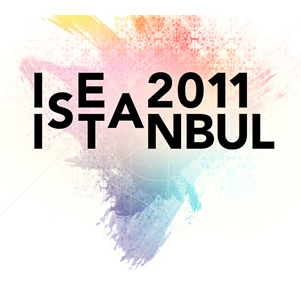
 Blais and Ippolito helped organize Digital Humanities Week in September, a collaboration among English, History, Sociology, and New Media that featured photo archivists and Twitter sociologists, guerilla gardeners and best-selling Kindle authors. Blais participated in the panel "Publishing Post-Gutenberg," organized by Margery Irvine.
Blais and Ippolito helped organize Digital Humanities Week in September, a collaboration among English, History, Sociology, and New Media that featured photo archivists and Twitter sociologists, guerilla gardeners and best-selling Kindle authors. Blais participated in the panel "Publishing Post-Gutenberg," organized by Margery Irvine.
 To coincide with Digital Humanities Week, Blais joined permaculture experts Julia and Charles Yelton, social media hackademic Craig Dietrich, Rural Maine Partners' Claudia Lowd, and members of the Wabanaki community in hosting Social Media and Sustainability at LongGreenHouse, a clearinghouse for sustainable culture on the edge of the U-Me campus.
To coincide with Digital Humanities Week, Blais joined permaculture experts Julia and Charles Yelton, social media hackademic Craig Dietrich, Rural Maine Partners' Claudia Lowd, and members of the Wabanaki community in hosting Social Media and Sustainability at LongGreenHouse, a clearinghouse for sustainable culture on the edge of the U-Me campus.
This event followed the summer's Gardening field days at LongGreenHouse, co-organized by the Still Water Permaculture Guild, to transform a normal residential yard into a perennial garden with edible fruit, vegetables, and herbs, using permaculture techniques.
French Still Water Fellow to focus on new Digital Curation program
Morgane Stricot has been selected as the 2012 Still Water Research Fellow. A graduate student in conservation at l'Ecole Supérieure d'Art in Avignon, Morgane has worked to restore murals in Italy and net art in France. Her residency in Orono from January to February is supported by funds from the French government and Project Seven initiative.
 Among her areas of focus will be the Digital Curation program, scheduled to launch in fall 2012, which includes Ippolito as well as faculty from the Art, Computer Science, Library, and other departments. The online, 18-credit curriculum aims to train anyone who works with digitized or born-digital items to make them accessible and meaningful to present and future generations.
Among her areas of focus will be the Digital Curation program, scheduled to launch in fall 2012, which includes Ippolito as well as faculty from the Art, Computer Science, Library, and other departments. The online, 18-credit curriculum aims to train anyone who works with digitized or born-digital items to make them accessible and meaningful to present and future generations.
Enduring culture in Brazil, Istanbul, and Melbourne
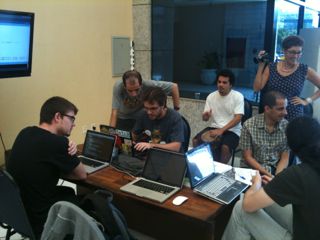 Which is the oldest human record? In his keynote Trusting Amateurs with Our Future to the National Symposium of Brazilian Cyberculture, Ippolito argued it lurks in the Amazon rainforest, and can help us fashion the most enduring artifacts in the digital age.
Which is the oldest human record? In his keynote Trusting Amateurs with Our Future to the National Symposium of Brazilian Cyberculture, Ippolito argued it lurks in the Amazon rainforest, and can help us fashion the most enduring artifacts in the digital age.
 Via teleconference, Ippolito spoke on Wind, Rain, and Ambient Preservation at ISEA 2011 in Istanbul, drawing on his book New Media and Social Memory forthcoming from MIT Press. Ippolito also contributed "The Panopticon Is Leaking" to the Digital Light conference in Melbourne, tracing the historical roots of light as both a metaphor for knowledge and a means of control.
Via teleconference, Ippolito spoke on Wind, Rain, and Ambient Preservation at ISEA 2011 in Istanbul, drawing on his book New Media and Social Memory forthcoming from MIT Press. Ippolito also contributed "The Panopticon Is Leaking" to the Digital Light conference in Melbourne, tracing the historical roots of light as both a metaphor for knowledge and a means of control.
Growing local networks at ESTIA, Maine Rural Partners, and Portland Maine Permaculture
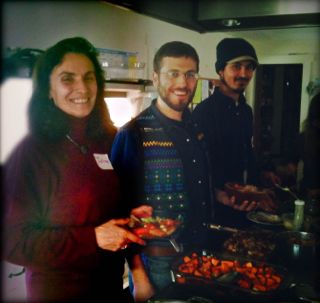
 At the 8th Annual ESTIA EcoPeace Conference, Blais asked her audience how to get more kids involved in growing food, connecting to the earth, and otherwise participating in conversations about a sustainable future. Blais contributed her experience as a certified Permaculture designer to the Portland Maine Permaculture December meeting, and spoke alongside Still Water Fellow Miigam'agan at a conference organized by Maine Rural Partners, as covered in the Republican Journal.
At the 8th Annual ESTIA EcoPeace Conference, Blais asked her audience how to get more kids involved in growing food, connecting to the earth, and otherwise participating in conversations about a sustainable future. Blais contributed her experience as a certified Permaculture designer to the Portland Maine Permaculture December meeting, and spoke alongside Still Water Fellow Miigam'agan at a conference organized by Maine Rural Partners, as covered in the Republican Journal.
UMaine software featured in digital learning anthology, conference
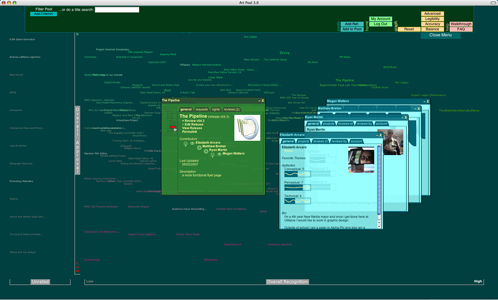 The Pool, an online environment created by Still Water that has helped over 1300 students across the US collaborate on creative works, is one of the software packages showcased in the 2011 anthology Learning Through Digital Media: Experiments in Technology and Pedagogy.
The Pool, an online environment created by Still Water that has helped over 1300 students across the US collaborate on creative works, is one of the software packages showcased in the 2011 anthology Learning Through Digital Media: Experiments in Technology and Pedagogy.
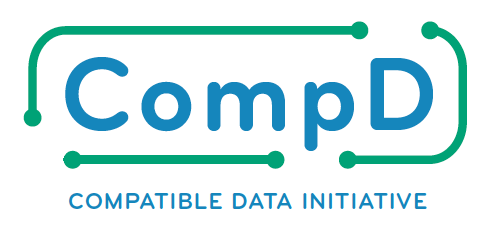 Still Water's archival tools were also featured in a keynote at the Compatible Data conference at Fordham University in New York, which included participants from the New York Public Library, Columbia and Brown universities.
Still Water's archival tools were also featured in a keynote at the Compatible Data conference at Fordham University in New York, which included participants from the New York Public Library, Columbia and Brown universities.
John Bell advances in national digital competitions
 Still Water Senior Researcher John Bell has been selected as a winner in stage one of this year's Digital Media+Learning competition, an initiative of the Humanities, Arts, Science, and Technology Advanced Collaboratory (HASTAC) and the Mozilla Foundation with support from the MacArthur Foundation. Meanwhile, Bell's proposal for enhancing the quality of citizen journalism was a finalist in the Mozilla-Knight Foundation's News Technology Partnership.
Still Water Senior Researcher John Bell has been selected as a winner in stage one of this year's Digital Media+Learning competition, an initiative of the Humanities, Arts, Science, and Technology Advanced Collaboratory (HASTAC) and the Mozilla Foundation with support from the MacArthur Foundation. Meanwhile, Bell's proposal for enhancing the quality of citizen journalism was a finalist in the Mozilla-Knight Foundation's News Technology Partnership.
Uphill is the new downhill and other news
An article in the Republican Journal showcased an interdisciplinary collaboration between Blais' New Media students and the Folklife Center and History department; a project by Blais' advisee was one of the CLAS Research Fellowships for the alternative reality game GIY (Grow It Yourself). Ippolito was quoted on the benefits of crowdsourcing in the Lewiston/Auburn Sun Journal. And to prove that fossil-free transportation is possible even in Maine, last year Blais began to commute the 25 miles between her home and campus by electric bike.
Stay tuned!
You can always learn more about Still Water at Still-Water.net. (If you want to stop getting these biannual newsletters, please let us know.) Best wishes for 2012!
Subject: Still Water champions permanent culture at home and abroad
Here's a roundup of recent news from Still Water, the New Media Department's research arm dedicated to studying and building networks of creativity. Still Water is co-directed by Joline Blais and Jon Ippolito.
Permanent culture: The Italian perspective
December saw Ippolito in Rome giving a featured talk on cultural preservation at the Museum of the Art of the 21st century (MAXXI), a dramatic building by famed architect Zaha Hadid that opened in June. Italians are of course well versed in the benefits and controversies of cultural preservation through their experience with examples such as the Sistine Chapel cleaning. Drawing on the "variable media" paradigm pioneered by Still Water, Ippolito spoke to dynamic new approaches that focus less on conserving relics than re-animating original behaviors or experiences.
This philosophy of dynamic preservation turns out to have ancient roots in Sicily, where Blais did fieldwork in December, surveying a Permaculture site near Caccamo founded by Australians Julia and Charles Yelton and touring the reconstructed Kolymbetra garden in Agrigento, whose orchards irrigated by antique Hellenic cisterns offer visitors free fruit for the taking. Blais and Ippolito also met with the townspeople of CastelBuono, a medieval hilltown-turned-ecovillage whose stone houses are ideal for heat exchange, and where a donkey picks up recyclables and food compost headed for local farmers. Plans are afoot for a student exchange between these Italian contacts and Orono's sustainable programs LongGreenHouse and ESTIA.
Rescuing culture from oblivion at ISEA
Still Water Senior Researcher John Bell presented Still Water's latest preservation tools at the 2010 International Symposium on Electronic Art. Hosted by the Inter Media Art Institute of Dusseldorf (imai), the symposium "Still Accessible? Rethinking the Preservation of Media Art" gathered experts from organizations such as the San Francisco Museum of Modern Art and Netherlands Media Art Institute for a conversation on best practices for rescuing contemporary media art from oblivion. Bell is the lead developer on the Variable Media Questionnaire, an open-source preservation tool available to artists and arts professionals as a free Web service.
Transparency in the age of Wikileaks
The Still Water co-directors presented at the William S. Cohen Forum on The Promise & Problems of Transparency on 12 November. While representatives from the Maine governor's office and Senator Susan Collins spoke mostly about sunshine laws in the era of Wikileaks, Blais presented Belfast Cohousing & Ecovillage as an example of built-in transparency, where decisions are made by community consensus. (Blais is an equity member of this acclaimed experiment in sustainability, due to break ground in the fall.)
Meanwhile, Ippolito showed examples of how to inject transparency into contexts that don't normally have it, including a third-party Web plugin that injects carbon costs into travel Web sites such as Delta.com and Expedia. In the interests of exploring the topic of transparency in the format of the conference itself, Still Water created an accompanying hyperblog--a Web site to which anyone could add comments or questions during the presentations in real time.
LongGreenHouse event celebrates Life Art
One of the coldest weeks of the year didn't stop attenders of Aurono Borealis, an outdoor performance at LongGreenHouse this January. Intermedia MFA students in Blais's Life Art class organized a "council of beings" that attracted a variety of faculty, students, and members of the Wabanaki community. Contributions included an outdoor interactive LED installation by Oren Darling that inhabited a magnificent maple tree, as well as a Fire Suit by Carol Ayoob that literally uncovered the "silver lining" in discarded plastic food bags. These experiments in co-creating with other people or living beings were the culmination of a graduate class that challenged students to define the natural environment that grounds them as artists and then to leverage their connection to local communities and ecosystems to amplify their work's effects.
ThoughtMesh gathers steam
Still Water Senior Researcher Craig Dietrich has been busy incorporating video and other improvements to the ThoughtMesh publishing system, a co-production of Still Water and USC's Vectors journal. These enhancements have already begun to bear fruit, as Mark Marino and Max Feinstein of Critical Code Studies published their 2010 conference proceedings (held at USC during the summer institute) in ThoughtMesh, and discussed the publication in the ongoing HASTAC Scholars Forum. Meanwhile MIT Press has begun using ThoughtMesh to publish articles from its renowned peer-reviewed journal Leonardo.
While the CCS Mesh gathers together seventeen presentations from the conference, many authors use ThoughtMesh to publish one document at a time. In January Egyptian-American Laila Shereen Sakr used ThoughtMesh to publish an analysis based on software that mined Twitter for related tweets of anti-government protests. In yet another use of this innovative publishing software, Carnegie Mellon's Drew Davidson continues to publish full-length books in ThoughtMesh via ETC Press.
In other news
Blais gave a workshop on ecovillages, focusing on the Belfast Cohousing & Ecovillage, at the October 22nd ESTIA ecovillage conference at Belfast's Hutchinson Center. Anthropologist James Leach presented the Cross-Cultural Partnership, developed by a working group organized by Still Water, at a conference organized by the Spanish National Research Council in Madrid from 4-5 November 2010. Ippolito was a featured contributor in an online forum on archiving new media run by Sydney, Australia's Empyre forum in September of 2010.
Capstone spotlight
A number of last spring's crop of New Media capstones grounded themselves in Maine economies and ecologies, proposing businesses based on cradle-to-cradle design and other green practices. Other capstones aimed to make us conscious of daily life--from sunglasses that automatically upload photos of our travels to installations that explore our digital body image. Several start-ups had attracted sizable audiences before their founders--VJ performers and art magazine editors--had even graduated.
In their capstone classes, Blais and Ippolito began last year to require their seniors to plan project timelines that extend well beyond graduation. NMD class of 2010 alumnus Chris Bagley is one of their students for whom this long-term approach seems to have succeeded. By the fall after his graduation, Bagley's capstone--ecologically designed performance skis built from bamboo--had been featured in the Bangor Daily News and on NMDnet, and in January Bagley won the CaliBamboo prize for his innovative use of this renewable material.
We salute all our capstone students for their contributions to our sustainable future.
Stay tuned!
You can always learn more about Still Water at Still-Water.net. (If you want to stop getting these biannual newsletters, please let us know.)
Subject: Still Water program cultivates green students
Still Water, the lab co-founded by New Media faculty Joline Blais and Jon Ippolito, continues to explore the critical role ecological, electronic, and social networks play in 21st-century life.
Journeypersons model green living at LongGreenHouse
This fall, five UMaine students in the Still Water Permaculture Guild are practicing sustainable living as part of their education at LongGreenHouse, an independently run "green dorm" at the south edge of campus. Inheriting a greenhouse, coldframe, swaled garden beds, swaled garden beds, and a green corridor into campus from former LongGreenHouse students, these journeypersons combine coursework, onsite projects and hands-on permaculture training with Joline Blais to ground their education in the rich soils of Orono. More.
Digital preservation tools unveiled in Montreal, Harvard
The much-anticipated 3rd generation Variable Media Questionnaire launched at last March's DOCAM Summit in Montreal to considerable acclaim. Conceived by Ippolito and built by Still Water Senior Researcher John Bell, this participatory resource is a practical and innovative tool for the preservation of contemporary art and artifacts. Speaking of technological obsolescence on the Empyre list after the conference, Columbia College's Patrick Lichty writes "only Jon Ippolito's Variable Media Initiative gets close to fitting as a solution." DOCAM 2010 also saw the debut of the Metaserver, a networked system that could provide unparalleled levels of access to cultural collections of all kinds created by Bell with fellow Still Water researcher Craig Dietrich. The Questionnaire and Metaserver were also the focus of a presentation by Forging the Future principal and Whitney Museum curator Christiane Paul at Harvard's Sackler Museum.
"Beyond Facebook" in Orono and Minneapolis
As part of the Women in the Curriculum presentation series last March, Blais and Ippolito presented "Beyond Facebook: From Cliques to Kinship" and led a discussion on the benefits and limits of electronically mediated social networks. They examined how Facebook meets the needs of adolescents and young adults for connection and sociality with a 'mediated' substitute that generates information (and thus power and money) for a corporation. A lively conversation with the audience contrasted the superficial networking of Facebook with other virtual alternatives as well as with the dense networking in face-to face kinship situations. Ippolito echoed similar themes in a talk that kicked off the Walker Art Center's Open Field event last June.
Grand Challenges at Duke, Northeastern, and closer to home
Blais and Ippolito presented strategies for preserving creative cultures at numerous venues in the past six months, including HASTAC's Grand Challenges and Global Innovations Conference held in April and organized by Duke University and the University of Illinois. John Bell joined Ippolito in May to present evidence that networks can help underdogs prevail at NetSci 2010, held at renowned network theorist Albert-Laszlo Barabasi's Center for Complex Network Research at Northeastern University. Ippolito was also a featured contributor on the New Media Curating discussion list, organized by University of Sunderland, UK.
Meanwhile, last March Blais spoke on the need for food security and community governance during climate change at Transition Town meetings in Ellsworth and Belfast. Still Water also organized "Technology versus History," a talk by Italian Curator and Columbia University Fellow Laura Barreca, who spoke about controversies such as the restoration of the Sistine Chapel in the light of contemporary aesthetics. Apart from last spring's New Media Capstone Night, Still Water organized a Contagious Idea Expo at the Foster Innovation Center to help students harness the power of viral promotion for their work in and outside of college.
Upcoming events
Blais and Ippolito are scheduled to present at the ESTIA ecovillage conference at the Hutchinson Center on 22 October, the William S. Cohen Forum on transparency and governance on 12 November, and numerous international conferences from Sicily to Melbourne in the coming year. You can learn more at Still-Water.net.
Subject: Still Water awarded grant, publishes book on innovation
Still Water co-director Joline Blais and I would like to share some good news to kick off the new year.
Innovators book published
Still Water is pleased to announce the publication of 60: Innovators Shaping Our Creative Future, a landmark book on the occasion of the 60th anniversary of renowned art and design publishing house Thames & Hudson. Still Water co-directors Blais and Ippolito penned the new media section of this book, which profiles five of the most innovative creators on the planet today.
These visionaries take the lessons learned from experiments in online communities and apply them to real-world problems, whether making cities sustainable, holding corporations accountable, or re-imagining laws that govern the flow of information. Included among these innovators are Maine's own Miigam'agan and gkisedtanamoogk, Wabanaki elders who are building bridges between their ancestors' lifeways and the 21st century.
"Every now and again along comes a book that acts as a cultural bookmark ... Thames & Hudson's new doorstopper Sixty is just such a book" -- Grafik Magazine
"A collection of incredible, truly inspiring work from all over the world." -- The Design Files.
"Showcases the most creative minds in fashion, architecture, photography, green technology and science." -- New Scientist
"Fascinating insights into global projects that may predict future directions are presented here in an informative and visually appealing format." -- Library Journal
LongGreenHouse watershed grant
Still Water has been awarded a Maine Water Resources Research Institute grant for a community-based ecological intervention that is creative and practical at the same time. The project takes place at LongGreenHouse, a site at the southern edge of the Orono campus dedicated to the intersection of old and new models of sustainability.
The initiative will take a core Permaculture design principle--"the problem is the solution"--and focus energy on transforming a current economic and ecological liability (stormwater run-off) into an educational and economic asset (collaborative ecological restoration and food production). In the process--via online documentation, social networking, and artists' engagement--this LongGreenHouse project will raise public awareness of the effectiveness of collaborative and ecological designs.
The application received the highest score of relevance from all three of its reviewers, who noted:
"I have met with the investigators and am convinced that their work will be of the highest caliber. They are inventive and dedicated and have been inspirational to students and faculty on campus."
"This proposal's potential value to society is great--especially in an increasingly resource constrained world where current human behavior, technologies and development patterns are nearly completely unsustainable and in need of deep redesign....its integration of art, community and design engineers holds the potential to communicate the culture-shift necessary to move up-stream and eventually eliminate many of the toxic and organic sources of waste currently entering water ways."
Most downloaded article in MIT's Leonardo
"New Criteria for New Media" topped the list of the most downloaded article from MIT's Leonardo Journal with 695 downloads as of 31 December 2009. This article by Joline Blais, Steve Evans, Jon Ippolito, Owen F. Smith, and Nathan Stormer proposes concrete new academic guidelines for evaluating scholarship in the digital age, and has garnered enormous attention from university researchers and administrators alike.
A pdf version can be downloaded from the MIT Press Web site. An interactive version of the article can be found at ThoughtMesh.net.
Congratulations to all the authors!
Subject: Still Water's Pool spurs inter-university collaboration
Recent Still Water projects include these collaborations across coasts and cultures:
Santa Cruz dives into The Pool
The Pool, an online collaborative environment created by Still Water, has earned a headline story in Wired magazine, a feature in the Chronicle of Higher Education, and a demonstration at Harvard's Berkman Center for the Internet and Society. Yet with the exception of a semester-long experiment with students from UC-Berkeley in 2003, until this year The Pool's audience has been almost exclusively students at the University of Maine.
This term, however, The Pool has become a lot more crowded, as students from two classes at the University of California at Santa Cruz join three U-Me classes in using this unusual software to bounce ideas off each other and receive feedback across the two campuses.
Athough divided across the east and west coast, the 250 students will be united by a common interface and timeline as they contribute intents, sketch approaches, build approaches, and offer feedback across classes and time zones. University of Maine professors Joline Blais and Jon Ippolito will present a preliminary report of the testbed's results at a conference organized by UC-Santa Cruz, The Art of Collaboration, on 23 October 2009.
The Pool is already awash with contributions. As of October 2009, The Pool had 450 users tracking over 1500 project versions via over 3400 reviews. Significantly, these contributions precipitate a greater social impact than the typical "one-off" assignments submitted and filed away in most university classes, for The Pool encourages students across different courses and in future years to learn from and build off works from the past.
According to a sociological analysis by Margaretha Haughwout published in a 2006 article in the peer-reviewed journal First Monday, the longer students used The Pool, the more likely they were to choose license terms that permitted their work to be re-used by others. Apart from attracting a more diverse population to The Pool, the U-Me/Santa Cruz collaboration aims to follow up on Haughwout's original analysis by surveying users before and after their experience with The Pool to examine how attitudes toward and styles of collaboration vary with geography and ethnic background.
The Pool was conceived and produced by members of the New Media Department, including faculty Joline Blais, Jon Ippolito, Mike Scott, and Owen Smith and students John Bell, Margaretha Haughwout, Matt James, Jerome Knope, Kristin Murphy, and Justin Russell.
LinkCapstone spotlight: Native language preservation project
One of the most successful capstones from the latest crop of New Media seniors, the Passamaquoddy Living Learning System, aims to preserve the endangered language of one of Maine's four Wabanaki nations. A Rural Utilities Service grant secured by Still Water co-director Joline Blais supplied five Macintosh iBooks with built-in video recorders to distribute to the Passamaquoddy community. These in turn enabled younger members of the community to record their grandparents and other elders telling stories that incorporate words in Passamaquoddy, and to upload these videos to a sophisticated Web interface.
The project was the brainchild of New Media major Ian Larson, who worked with Drupal developer Sam Hunter, Wabanaki Center director Gail Dana-Sacco, New Media faculty Joline Blais and Mike Scott, and fellow student Glenn Attalla to implement the ambitious system.
LinkRecent and upcoming publications
Still Water staff have a number of significant publications in the works, including a book to be published next year by MIT Press entitled New Media and Social Memory, co-authored by Ippolito and UC-Berkeley's Richard Rinehart. Still Water Senior Researcher John Bell also published the lead article in the latest issue of the peer-reviewed journal Open Source Business Resource.
In addition, Still Water co-directors Blais and Ippolito have penned the new media section of The Innovators, an ambitious book to be published later this year by Thames & Hudson to commemorate its sixtieth anniversary as a leading art and design press. The Innovators will also be the subject of a symposium organized by Still Water in collaboration with the University of Maine's Foster Student Innovation Center and the Hutchinson Center in Belfast.
Apart from the Santa Cruz conference mentioned above, Blais and Ippolito have recently presented their research in conferences in Manchester (UK), Tenerife (Canary Islands), Madrid (Spain), and Unity (Maine).
Subject: Still Water imagines edible campus and other innovations
Although its co-directors were on sabbatical, in the past year the Still Water lab re-imagined the University of Maine as an edible campus, built new features into its creative software tools, signed new book contracts with MIT and Thames & Hudson, and sponsored contributions to a dozen conferences from Madrid to Taipei.
Green U-Me offers vision of edible campus
Still Water Research Fellow and Wabanaki elder gkisedtanamoogk joined Still Water co-director Joline Blais, Intermedia MFA students, and a cadre of renowned permaculture experts in Green U-Me, a two-day workshop exploring solutions to ecological issues on campus from green building to water runoff to food forests. This design charette focused on the bioregion at the southern edge of campus, near York Village, the Eastern Athletic Fields, and LongGreenHouse, Still Water's permaculture site on Chapel road. The intense brainstorming sessions uncovered numerous common themes among the research of workshop participants, including faculty and students from soil science, cooperative extension, engineering, and new media.
In related efforts aimed at encouraging local sustainability, Blais and gkisedtanamoogk spoke at the 2008 Bioneers conference and Intermedia grad student Bill Giordano planned and implemented a perennial garden design at LongGreenHouse.
ThoughtMesh launches open peer-review
Still Water Senior Researchers Craig Dietrich and John Bell have just launched a sophisticated reviewing system internal to the ThoughtMesh open publication platform. ThoughtMesh's reviews are subject to a rigorous trust metric; each reviewer must claim a level of expertise before rating an article, and the software holds them accountable in a way that even the rigorous method of peer reviewers for academic journals do not achieve. You can see a sample discussion by clicking on the "peer review" tab of Robin Boast's paper "Open Objects Initiative: A Critique of Openness."
The release of this peer review feature is good timing, given MIT's recent publication of the University of Maine's new criteria for 21st-century academics.
MIT publishes U-Me new media guidelines
MIT's Leonardo magazine has published the promotion and tenure criteria of the University of Maine's New Media Department, along with a white paper entitled "New Criteria for New Media" that argues for updating academic standards for the Internet age. The publication has been reported in over 1000 outlets online, from Rhizome to HASTAC to LibraryThing. The criteria have already made their way into policy statements at UCSD, the University of Minnesota, and the University of Nebraska.
Co-authored by U-Me faculty Owen Smith, Steve Evans, Nate Stormer, and Still Water's Blais and Ippolito, the publication can be downloaded for free at the Leonardo Web site, and is mirrored in interactive form at ThoughtMesh. For more, see the feature story at the U-Me New Media Web site.
Forging the Future
Following its summit in Lucerne-in-Maine last September, the NEH-funded Forging the Future project has made substantial progress on its toolset for digital preservation. Prominent among these are a questionnaire to help translate works into new media in the future and a "metaserver" that relates cultural works squirreled away in separate institutions. Since last August, Forging the Future members have given presentations to archivists, conservators, librarians, humanists, and choreographers at conferences in Amsterdam, Austin, Chicago, Cleveland, Denver, Los Angeles, Maryland, New York, San Francisco, Tapei (Taiwan), and Urbana-Champaign.
The Innovators and other publications
Apart from the Leonardo publication mentioned above, in the past year Blais and Ippolito published articles in the journal ArteContexto (Madrid) and the book New Media in the White Cube and Beyond (UCLA Press). They also co-edited the new media section of the forthcoming Thames & Hudson book The Innovators, a landmark survey of cutting-edge innovation to mark the 60th anniversary of this well-known publishing house. Ippolito also began work on a book for MIT Press, co-authored with media expert Richard Rinehart, entitled New Media and Social Memory: The Quest To Rescue Digital Culture from Obsolescence and Oblivion.
Diversity and Creativity
In the past year, Blais and Ippolito presented at ARCO Madrid, and at The Art of With in Manchester, UK. Speaking at a presidential panel at Bates College on diversity and new media, Blais proposed an inter-collegiate initiative on fostering creativity in the state of Maine.
Subject: Still Water projects at Harvard, University of Cambridge
It's been a busy summer for the New Media Department's Still Water lab, notwithstanding the sabbaticals of its co-directors...
Anthropologists Dig the Cross-Cultural Partnership
APRIL 2008. Still Water Research Fellow and Wabanaki elder gkisedtanamoogk joined Joline Blais and Jon Ippolito in presenting Still Water's innovative legal template for fostering collaboration across cultural divides at a Cambridge University conference entitled Subversion, Conversion, Development: Public Interests in Technologies. Meant to expand the conversation begun at Still Water's 2006 and 2007 Connected Knowledge conferences, this meeting featured researchers in the fields of anthropology, philosophy, religious studies, and the tech industry.
LinkPoets and Pundits Pounce on ThoughtMesh
JUNE 2008. Over forty authors from the National Poetry Foundation's conference on poetry of the seventies have published their work using a new Still Water tool that reveals connections among different peoples' writing. Now poets and poetry scholars at other universities appear to be jumping on the bandwagon. Who knew that "1973" and "John Ashbery" were on so many poets' minds? ThoughtMesh did.
LinkThe Ivory Tower Just Got a Little More Crowded
JULY 2008. More people than ever will be able to access and contribute to academic research and development, thanks to tools built by Still Water faculty and Fellows to help creative thinkers share their work. Recently showcased at Harvard's Berkman Center for the Internet and Society, in the Chronicle of Higher Education, and soon to appear in Leonardo magazine, these new networks may change the way creative and scholarly research is recognized by universities across the world.
LinkLongGreenHouse Cultivates Town-Gown Connections
SUMMER 2008. Still Water's living-learning center on Chapel Street, LongGreenHouse, has been exploring the intersection between Native culture and Permaculture with students from many walks of life. In July thirty students from the university's Upward Bound program attended Joline Blais' workshops on greenhouses and plant guilds. Meanwhile kids from LongGreenHouse's Wassookeag school have been busy too: in April they made dreamcatchers with Penobscot elder Charlene Francis; in July they visited the Black Bear Food Guild; in September they built a geodesic dome with Intermedia MFA student Bill Giordano. The BBFG's July newsletter described the Wassookeag students as "intelligent, thoughtful, and incredibly enjoyable"; they "had a zeal for learning that was really amazing."
LinkWelcome new Research Fellows!
Craig Dietrich and Vanessa Vobis have been announced as 2008-2009 Still Water Research Fellows. Artist-researcher Craig Dietrich engineers interfaces for creative and scholarly examinations of transnational culture using tools as varied as streaming video, database-driven Flash interfaces, cell-phone texting, and Dashboard widgets. His collaborations in the intersection between digital media and transnational culture include the tag-based publication system ThoughtMesh and the innovative Mukurtu Archive of Aboriginal media, recently featured on the BBC. German-born Vanessa Vobis is an installation and multimedia artist whose research focuses on the underside of biological and cultural systems. Her custom-built ecosystems such as Plot, Body Beasts, and The Crystal World suggest natural history dioramas that are both otherworldly and familiar, repellent and compelling. Recently exhibited in Sweden, Estonia, and the Netherlands, Vobis' videos have won a Silver Eddy at the Cedar Rapids Film Festival.
Still Water: what networks need to thrive.Subject: Nature 2.0: Still Water projects at Colgate, Cambridge Universities
[insert low-res Nature 2.0 postcard image]
Still Water projects at Nature 2.0
New Still Water [Link] projects that explore the connection between sustainable design and indigenous cultures will be featured at Colgate and Cambridge Universities this spring. New Media assistant professor Joline Blais will present online and earth-based works developed with Still Water Research Fellows gkisedtanamoogk and Miigam'agan, elders from the Wampanoag and Mi'kmaq Nations respectively.
RFC (Request for Ceremony) [Link] is a call for individuals to re-connect to the land around them by inventing ceremonies to accompany moments from their daily lives. In a deliberate echo of the "Requests for Comments" that generated the protocols now governing today's Internet, RFC takes the form of an online community repository. In keeping with the project's focus on the earthly rather than the ethereal, Still Water's repository includes categories such as Home and Healing rather than Telnet and TCP.
Contributions to RFC to date include a ceremony devised by gradeschool kids for healing pruned trees, a birthday walk conducted by a Montessori teacher, and a tattoo ritual by a college student intent on warding off stereotypical body images. To expose relationships among these diverse ceremonies, RFC deploys a tag cloud based on ThoughtMesh, the software developed by Still Water co-director Jon Ippolito and USC Vectors Fellow Craig Dietrich.
RFC is a featured work in the exhibition Nature Version 2.0: Ecological Modernities and Digital Environmentalism [Link] at Colgate University from January 21 to February 16, 2008. This survey of artists who reinvent environmentalism for a digital age includes a two-day Environmental Art and New Media Technologies symposium on February 8.
RFC will also be a featured project at the conference Subversion, Conversion, Development: Public Interests in ICT [Link] at Cambridge University from 24-26 April 2008. Subversion, Conversion, Development explores why designers and developers of new technologies should be interested in producing objects that users can modify, redeploy or redevelop.
RFC is produced as part of Still Water's LongGreenHouse [Link] initiative, devoted to fostering ties between sustainable and indigenous cultures. Located on the edge of campus at 5 Chapel Street, LongGreenHouse is a living/learning center based on the Wabanaki Longhouse model and permaculture design principles, and features a multi-age school, college student interns, and a team of hands-on advisors.
Under the direction of Still Water Research Fellows Charles and Julia Yelton [Link], U-Me students at LongGreenHouse worked this past fall with other community members to build a 24-foot [CK: bigger?] four-season greenhouse, a ten-foot coldframe, 150 running feet of swaled gardens, and plans for a stream revitalization project in partnership with University Office of Stormwater Management.
For more information, please contact Joline Blais via First Class.
Still Water is a research arm of U-Me's New Media Department devoted to studying and nurturing networked creativity. [logo]
2007-10-30
Subject: Still Water wires thinkers with new publication tool
Finding scholarly writing online used to be a shot in the dark; an academic paper on Cezanne's figure paintings, for example, is unlikely to rank high on a Google search for "nude bathers." Last week, however, Still Water launched a new tool designed to overturn this "lottery" approach by meshing the thoughts of writers from across the Web. Called [Link] ThoughtMesh, this software creates clouds of smart keywords that connect excerpts of essays published on different Web sites.
Here's how it works: you add your essay to the mesh, and ThoughtMesh gives you a traditional navigation menu plus a tag cloud that enables nonlinear access to text excerpts. You can navigate across excerpts both within the original essay and from related essays distributed across the mesh.
[Image:thoug_parti_map_ill@m.jpg] So let's say you are reading an essay on Modern art. You can pick a single word out of that essay's tag cloud--say Picasso--and view a list of all the sections from that essay that relate to Picasso. Or you can view a list of sections of other articles tagged with Picasso, and jump right to one of those sections. You can also combine tags to narrow your search, such as Picasso + Cubism + 1900.
Once you've meshed an essay, you can choose to post it in a central repository hosted by the Vectors program, or you can self-archive the essay on your own Web site.
Tara McPherson of USC [Link] says "ThoughtMesh invites you to push beyond the surface of your screen and the modular nature of much of digital culture toward larger enmeshed meanings." Kathleen Fitzpatrick of Pomona College [Link] calls ThoughtMesh "A dynamic and compelling mode of structuring and interlinking scholarly texts....The resulting mesh fruitfully highlights the often under-addressed social nature of reading and writing, as writers react and respond to one another through their texts."
ThoughtMesh is a collaborative project by Vector's Craig Dietrich and Still Water co-director Jon Ippolito, with help from Still Water Research Fellow John Bell. [Link] More on ThoughtMesh...
jon
2007-05-16
Subject: Still Water research in today's Wall Street Journal
Today's article on preserving ephemeral works of art describes the variable media paradigm developed by New Media's [Link] Still Water group (and coincidentally the basis of a recent NEH award to UMaine)--jon
Perishable Art: Investing In Works That May Not Last
Collectors Struggle to Preserve, Insure Contemporary Pieces; Replacing the Dead Shark
By M.P. MCQUEEN
May 16, 2007; Page D1
http://online.wsj.com/article/SB117927768289404269.html
In the white-hot market for contemporary art, a delicate issue is emerging: How do collectors preserve and insure works that may be short-lived -- often by design?
Some of the priciest contemporary works -- such as Damien Hirst's dead shark in a tank and Jeff Koons's 40-foot-high topiary puppy -- are made from perishable or delicate materials whose deterioration isn't covered by insurers. Other works, including pieces by Andy Warhol and Mark Rothko, use synthetic paints that may not hold up over time and aren't easily restored; video art uses electronic and digital media that may stop working. Some installation pieces are even meant to disappear over time.
Aging and wear affect all art, but the ephemeral nature of some contemporary art has become more problematic as values have soared. Prices of contemporary and postwar art shot up 44% in 2006 and 19% annually over the past five years, while art prices overall rose nearly 12% a year from 2001 to 2006, according to Artasanasset.com, a Web site founded by the creators of the Mei/Moses Fine Art Index.
This week's auctions at Sotheby's and Christie's in New York are expected to break records set last year for postwar and contemporary art with more than $1 billion in sales. Among the items up for grabs this week is Andy Warhol's 1963 "Green Car Crash," made of synthetic polymer and acrylic on linen, which has a presale estimate of $25 million to $35 million. A Damien Hirst painting in household paint on canvas with dead butterflies on it, "Untitled (Birthday Card Suite)," from 1999, is expected to sell for about half a million dollars.
But even as prices for such pieces vie with those for traditional oil paintings and sculptures, many of their materials are proving significantly less durable, breaking down in a matter of years rather than decades. "The materials they're made with are more delicate and more fragile and more susceptible to loss," says Katja Zigerlig, art specialist for American International Group Inc.
Dead animals, insects and hair decompose. Acrylic paints dry out and flake. The newspaper used in some works by Robert Rauschenberg has faded. If damaged, some newer paintings can be harder to restore than some Old Masters from the 1600s, experts say, because synthetic paints are hard to match. Some complex works may even require the replacement of parts -- not normally an option in traditional fine art -- and many will require special care if they're to preserve their value.
As he browsed the auction preview at Christie's on Saturday, Fred Brandt, 57, a prominent dermatologist in Miami and New York, said he had wondered whether the butterflies in a Damien Hirst painting he was considering might be a problem. Dr. Brandt said he asked his advisers about the butterflies' possibly disintegrating, but was told not to worry. Still, he added, "I will check out every butterfly and look at them before buying."
A similar Hirst recently was considered a total loss because butterfly wings on it were damaged in moving. While moving damage was covered, the wings couldn't be replaced because they came from a rare butterfly species, one insurer said.
Protecting such pieces' value poses unique problems for collectors. Insurance policies almost always rule out insuring art objects for "inherent vice," which includes natural deterioration such as rot and mold, or mechanical wear and tear. Vermin and insect damage, which affect textiles and objects made from organic materials, are also excluded from coverage. Insurance policies cover only damage from unexpected events like fire, theft and accidents.
Because of the difficulty of restoring some fragile contemporary artworks, some art insurers are charging as much as double the premium they would charge for more durable pieces such as oil paintings. Policies also may stipulate that collectors take painstaking conservation efforts, such as controlling light and temperature in the environment, as a condition of providing coverage. If the conditions aren't met, claims won't be paid.
While raising the personal-contents limit on one's homeowner policy or buying a personal-articles floater might be good enough for insuring ordinary collectibles, it isn't sufficient for major works of contemporary art, because of their complexity. Experts advise getting coverage from an insurer specializing in art.
Contemporary art also requires frequent reappraisals in this fast-moving market to avoid being underinsured. Also, buyers of some of the more avant-garde video, computer and multimedia installations should consider obtaining a document signed by the artist that states which elements of the artwork can be replaced or repaired without compromising the artist's intent or the piece's integrity, art scholars and insurance experts say.
Repairing and restoring contemporary art can pose novel problems. One example is the 1991 installation piece by Damien Hirst "The Physical Impossibility of Death in the Mind of Someone Living," a 14-foot tiger shark suspended in a tank of formaldehyde that is considered the seminal work of the Young British Artists movement. Purchased in 2005 by hedge-fund billionaire Steven A. Cohen of Greenwich, Conn., from the collection of British advertising tycoon Charles Saatchi for a reported $8 million, the dead shark was rotting from the inside out, causing it to take on a withered appearance and clouding the fluid in the tank.
Last year, Mr. Hirst replaced the original shark with another one at his workshop in England -- at Mr. Cohen's expense, a cost well in excess of $100,000, Mr. Cohen's spokesman confirmed. Though the centerpiece of the work has changed, it hasn't been regarded as damaged or diminished in value, though the issue is open to question among art historians.
A number of the other art works currently provoking bidding wars among hedge-fund billionaires and young collectors are vulnerable. The ephemeral media used in such artworks are often part of the artist's message of life's evanescence or -- strikingly, in view of their current values -- represent a rejection of conventional measures of aesthetic and commercial value.
In some conceptual art, breakdown is the point. For instance, the late Félix González-Torres illustrated the subject of loss and disintegration with a series of works, one a pile of 175 pounds of individually wrapped multicolored candies representing his lover's body wasting away from AIDS. The pile diminishes as viewers help themselves to the candy. Ownership of such a work usually consists of a license to re-create it.
Some types of postwar art are so new that they present unprecedented technological issues. Video and computer installation artworks, such as those pioneered by the artist Nam June Paik, who died in January 2006, use electronic components such as television monitors that wear out, or recording media whose formats become obsolete, like audio and videotape and computer files.
Other post-World War II objects are made of plastic, vinyl and acrylic, which came into use in the mid-20th century and aren't proving as durable as initially thought. For instance, some plastic Eames chairs have begun to break down gradually, and some acrylic paintings by the artist Mark Rothko are fading, insurers say.
The fragility of these types of art poses big risks for fine arts insurers because art policies are among the broadest of all policies, covering just about all the standard risks like fire and theft and some perils that are normally excluded from ordinary homeowner policies, such as earthquake and flood. (Some insurers may make exceptions for catastrophic risks in some states.) Only terrorism, war, inherent vice, intentional damage and damage inflicted during repairs are usually excluded from fine-arts insurance policies sold by AIG, AXA SA, Chubb Corp., Hiscox Ltd., and Fireman's Fund Insurance Co., a division of Allianz SE, among others.
Fine-arts policies also often contain a provision for "loss of value" that occurs when a piece cannot be completely restored to pristine condition after a covered claim. If a $2 million painting is worth just $1.5 million after a tear in the canvas, the insurer pays for the repair plus the $500,000 difference in price. Some fine-arts policies also cover up to 150% of the insured value to allow for appreciation.
Because art insurers are on the hook for so many types of losses, the difficulty of restoring fragile contemporary art is of growing concern to them. "If you damage an oil painting, it is relatively easy to mix up some oil paint and make a repair that the eye cannot really see, but with the acrylic paints, you can match the surface color but you cannot get it to match the texture," said Charles Dupplin, head of the art and private-client division at Hiscox Group, a large European art insurer that recently started writing policies on the East Coast.
Another area where restoration has posed new problems is video and computer art. Whether or not a piece of installation art can be restored without diminishing its value often hinges on whether one element, such as a VCR, can be replaced with a newer component, such as a DVD player, without changing the artist's intent or the integrity of the work as a whole. At Christie's, for instance, a 1985 video installation by Bruce Nauman, "Good Boy, Bad Boy," uses two VCRs and two videotapes.
Payce Louis, chief underwriting officer at AXA Art, says a consensus has emerged among insurers that certain video and computer art cannot get the broad all-risk coverage traditionally given to fine-art collections. "You cannot insure video art like a Picasso," Mr. Louis said. "We have all decided the VCR is not a part of the art itself and can't increase in value. The DVD and VCR are just players and insurable for its replacement cost only."
In instances where artists are still living, sometimes the creator has been able to authorize restorations, or even has made them himself, as with Mr. Hirst's shark. But the issue becomes much more complicated and controversial when the artist has died.
For that reason, Jon Ippolito, professor of art at the University of Maine at Orono, suggests that buyers of contemporary installation and video art obtain a signed document from the artist spelling out his or her intentions with respect to restoration. "A questionnaire that creates a last will and testament of the artist is the only way we can decide whether a given component is essential to the re-creation of the work," he said.
Outside the world of fine art, some newly popular collectibles pose similar quandaries. For instance, Hollywood ephemera, including costumes, sets and props belonging to famous films and film stars, have been soaring in value recently. James Comisar, of Beverly Hills, Calif., owner of the largest archive of original television artifacts, has insured the Cowardly Lion costume from 1939's classic film, "The Wizard of Oz," for $1 million or more with AXA.
Dirt, perspiration and make-up stains can enhance the desirability and authenticity of costumes and props, doubling their price, Mr. Comisar said. But those very same stains can help destroy them eventually, he said.
"People love Marilyn Monroe's lipstick stain or fake studio blood and bullet holes in a John Wayne costume. It makes it a lot more personal and a lot more valuable," he said. "But if you come back as a collector and say the perspiration stain on Lily Munster's dress is now a giant hole and file a claim, they will say absolutely not. They don't insure for that type of deterioration." Mr. Comisar stores his items in a special temperature, humidity and light-controlled warehouse to prevent that kind of wear and tear.
Collectors who want to acquire avant-garde art and treasures should consult with experts on conservation and insurance in advance. Robert Manley, a senior vice president of Christie's New York, also recommends working with artists who have strong gallery representation because of the greater responsibility involved in taking care of installations and other unorthodox works. "For installations and technological things, they have to be one part scientist and one part media expert," he said.
Write to M.P. McQueen at mp.mcqueen@wsj.com1
2007-07-13
Subject: Still Water faculty in Portland Press Herald
Still Water co-director Joline Blais weighs in on pressures to commercialize the most popular college social network.
[Image:71307_101106_0.pct]
Facebook loosens up
To provide more entertainment options--throw a virtual pie at a friend!--the famously independent social networking site opens the door to third-party software developers. Many among Facebook's 27 million subscribers are less than tickled by the change.
By ALLISON ROSS, Staff Writer
July 2, 2007
http://pressherald.mainetoday.com/story.php?id=117785
Every day, University of Southern Maine student Stephanie King looks at her horoscope, reads her fortune cookie, messages her friends, pets her virtual turtle, and contemplates whether to poke a friend, or perhaps throw a pie at them.
All of these are just a few of the many things that King and other Facebook users can do online, thanks to an evolution in Facebook's setup that was launched last month on the site that was originally created for college students to connect online, but now attracts millions of users from all walks of life.
The "Facebook Platform" is a system that allows companies and developers to create applications that will be integrated into the Facebook Web site, giving them full access to Facebook's 27 million active members.
"I love the Facebook applications," said King, who is 18. "They are just a way to express yourself even more." For instance, she uses the Graffiti application to draw fun things on her friends' profiles. And she got the Pet application to create Grelow, her turtle, so she could own a pet while still living in the dorms.
"With Facebook Platform, users … have access to a virtually limitless set of applications from outside developers," said Facebook spokeswoman Meredith Chin. She added that users are free to add or not add any offered applications, "choosing applications that are useful and relevant to them." But while many people, like King, have embraced the new Facebook changes, some are more wary, and it's still unclear whether this change will be embraced by the Facebook community in the long run.
Facebook is an online social network, sort of a mix between a neighborhood coffee shop and your old high school yearbook. Anyone with a valid e-mail address can join and create social networks. Unlike MySpace, the largest networking site on the Internet, Facebook is known for trying to protect its users' privacy by only allowing people to browse the profiles of their friends or people in their network.
It has also gained a reputation, thanks to founder and Chief Executive Officer Mark Zuckerberg, for being an independent site that caters to its users and refuses to be sold to larger companies. The launch of Facebook Platform is an attempt by Facebook to use third-party developers to draw in more users and make Facebook "an even more powerful social utility," the company said in a press release. However, this latest move has some questioning if outside companies are beginning to have undo influence on the Facebook layout.
The way Facebook is set up, users are given a sense of ownership with the Web site. They create and manage the look and security of their personal profiles, have the ability to add or delete information, and are given input on what should be put up or taken down. Rather than passive consumers, they are given the role of author and developer, and are actively involved in the creation and formulation of the sites.
Already, more than 805 applications have been integrated into the Facebook Web site, with many diverse groups clamoring to get in on the Facebook evolution. Internet sites like Digg, Amazon and Hot or Not have created applications that tie into their Web sites. Non-Internet companies have also gotten in on the action. Red Bull created a rock, paper, scissors tournament application, and Forbes launched a stocks application.
"Facebook Platform offers a new business opportunity," Chin said. "We want to enable developers to build a business on their Facebook applications."
Companies benefit by using Facebook as a marketing channel. They don't pay Facebook for the access, but the site sees the benefit of adding more features for its users. Applications can include banner ads or links to other sites, but Facebook doesn't allow the developers to put advertising onto users' profile pages.
Users that find an application they like simply click "add application," and it is added to their profile, with the option of inviting their friends to do the same. Each application works in a different way.
For instance, Superpoke is a program where users can go to friends' profiles and choose to virtually do a number of other things to them. The friends will be notified the next time they log in that they have been high-fived, tickled, poked, sucker punched, or even had a sheep thrown at them. Not everyone has embraced the change.
Westbrook resident Mike Nicholas said he doesn't like the way Facebook has been inundated with new applications. "At first, I didn't mind them," said Nicholas, who is 19. "Then one day, I woke up, and there were a ton of different applications, and I had all these requests to add all these pointless applications."
Disgruntled, Nicholas joined a Facebook group--started by fellow Westbrook resident Stacy Burton--that opposes the addition of all the outside applications.
Burton, 20, said the group's argument is that Facebook, which has been characterized by its minimalistic, easy-to-navigate look, is losing its appeal with the clutter of the new applications and is becoming too similar to MySpace.
Joline Blais, a professor of new media at the University of Maine, said part of the reason some users haven't embraced the new applications yet is that they feel they are being marketed to by groups or companies outside of the Facebook community. She said Facebook users don't want to be marketed to, and they dislike being pandered to instead of being in charge of their own community.
Blais said the launch of Facebook Platform was "very much a top-down effort," and that users may resent not having input on the introduction of new applications.
"There's a difference between entertainment that is just sent to you, and entertainment you create and share with each other," she said.
Facebook's introduction of News Feed last September provides a recent illustration of users rebelling against top-down management. The News Feed, which gives information on your friends' activities on Facebook, is now seen by many as a valuable feature of Facebook. When it first came out, though, users were critical, creating anti-News Feed groups and sending out protest messages.
Facebook CEO Zuckerberg sent out a message to all Facebook users, apologizing for not including the users in the redesign process and promising changes to the Feed that would give them more control.
While the protest against the Facebook Platform has not been as large as the one against News Feed, dozens of different groups have popped up on Facebook in opposition to the change. One group, entitled "Dear Facebook: Stop Becoming MySpace," has 2,577 users from several different networks. The group that Burton and Nicholas are a part of has 106 members and is called "Facebook is Turning into MySpace!!!!!! Too Many Choices!" However, despite some opposition, Facebook Platform has still been hugely popular. It's hard to dismiss the fact that some of the applications are just plain fun. Who wouldn't want to play virtual rock, paper, scissors, or throw a sheep at a friend? "Me and my friend David, we poke each other all the time," King said, referring to Superpoke. "It's just funny."
Staff Writer Allison Ross can be contacted at 791-6451 or at: aross@pressherald.com
Copyright © 2007 Blethen Maine Newspapers
_____
2007-03-18
Subject: Still Water awarded NEH grant for digital preservation
[Link][Image:forging_logo_hea4@m.jpg]
[Link] Still Water, an R&D arm of the New Media Department, has been awarded a $300,000 grant from the National Endowment for the Humanities to rescue digital culture from oblivion.
Technological obsolescence threatens the most important creative production of the digital age, yet the typical museum's strategy of storing an original in a climate-controlled crate is almost useless for safeguarding such works from the ravages of time. Forging the Future: New Tools for Variable Media Preservation, a Still Water initiative, aims to change all that.
Forging the Future is a consortium of museums and cultural heritage organizations dedicated to building new vocabularies and tools for cultural preservation. Apart from the University of Maine's Still Water program, the consortium includes the University of California at Berkeley, the online art platform Rhizome.org, the Franklin Furnace performance archive, New Langton Arts, and the Whitney Museum of American Art.
The tools produced by the Forging the Future consortium will go beyond the default storage paradigm to include the full range of preservation techniques explored by a related Still Water project, the Variable Media Network. These include the powerful technique of emulation, a process by which a new computer can impersonate an older one.
The two-year Forging the Future initiative was first announced in January 2007 at "New Media and Social Memory," a Berkeley symposium that featured Still Water principals, members of the consortium, renowned science fiction writer Bruce Sterling, and Stewart Brand of the Whole Earth Catalogue and Long Now Foundation.
For more information on the initiative, please contact Jon Ippolito or visit the [Link] related story on the New Media Web site, which contains links to the Variable Media Network and videocasts of the Berkeley symposium.
[Link][Image:sti_logo_static-m.gif]
2007-02-07
Subject: Still Water launches Cross-Cultural Partnership
As Jon Ippolito & I promised, here is an update on a recent Still Water activity we thought would interest you. Thanks for reading.
joline.
[Link][Image:cross_cultural_logo_tra_xvga@m.png]
How can the free access to information required for a democratic society be reconciled with the privacy rights of electronic citizens? This question looms large in a world of gene patenting, Global Positioning Satellites, and warrantless wiretaps.
Yet sometimes the key to the future lies in the past. Indigenous peoples share medicines, songs, and stories in ways that are neither fully open nor closed, but that reinforce the social fabric of their communities.
That's why [Link] Still Water has brought together representatives of both indigenous and electronic networks to envision a legal and cultural framework for sharing knowledge in a way that is responsible and sustainable. The novel framework they have created, the [Link] Cross-Cultural Partnership, can help organizations, businesses, and individuals build bridges of ethical behavior across the cultural clashes that increasingly divide this globalized world.
Meant to be tailored to each circumstance, the framework encourages partners to define and abide by practices that emphasize kinship rather than competition, participation rather than passivity, genealogy rather than genius.
The framework is designed to overcome some of the shortcomings of the first generation of protocols for sharing knowledge, such as Creative Commons licenses. As inspiring as these protocols are, they unfortunately emphasize consumption instead of creation, because they lack provisions for offering source files rather than simply executables. More importantly, they emphasize a social dynamic of detachment rather than connection; simply put, there is no easy way for someone who uploads their mp3 under a Creative Commons license to find out who ends up listening to it or remixing it. This "free-for-all" ethic may have been useful for the early Internet, but it does not serve the long-term sustainability of artistic and electronic networks, which rely on meaningful social ties rather than hit-and-run mashups. And anyone who's worked with Native communities knows how poorly the "information wants to be free" network model works for indigenous peoples.
So in 2006 Still Water worked with Wampanoag elder gkisedtanamoogk and Mi'kmaq clan mother Miigam'agan to envision a more ambitious legal framework, designed to guide networks between the opposing poles of "copyright lockdown" and "information wants to be free" toward a more sustainable model for online and indigenous communities. A four-day intensive workshop in November brought together some very bright representatives of Native and electronic networks: Charlene Francis of the Penobscot Nation; James Leach of Cambridge University and Papua New Guinea; Wendy Seltzer of Harvard's Berkman Center; and Neeru Paharia, former director of Creative Commons.
The framework they drafted is meant to help bridge some of the many cultural divides permeate our society: between drug companies and rainforest shamans over medicinal herbs; between Native peoples and musicians over ceremonial chants; between artists and technologists in art and science collaborations; and between libertarians and communitarians over control of software design.
The framework itself, as well as more on the philosophy and contributors behind it, can be found at:
http://newmedia.umaine.edu/stillwater/partnership/
